Food Handling Safety Training – [Complete Video Kit]
$239

Do your employees need training on Food Handling Safety? If so, then this training package is for you. When you are in any business that handles food for any reason, you know that there are dangers to handling food incorrectly. Millions of Americans will experience foodborne illnesses in the coming year. The key to making sure this doesn’t happen to your customers is through Food Handling Safety Training.
This Food Handler Training Covers These Important Topics:
- How many different foodborne illnesses are there, and what are the things employees who handle food can do to prevent contamination?
- What are the things that can contaminate food? (Bacteria, parasites, viruses, etc.)
- What groups are most susceptible to eating contaminated foods? (children and the elderly)
- What are the symptoms that might indicate a person might have eaten contaminated food? (Stomach cramps, diarrhea, and vomiting are most common)
- What government entities require that employees follow safe food work practices? (Federal, State, and Local government agencies all have some form of regulations requiring the safe handling of food)
- What are some examples of bacterial foodborne pathogens? (Salmonella, listeria, and E. Coli just to name a few of the most common causes of food contamination)
- What are some examples of foodborne viruses? (hepatitis A and norovirus are the most common foodborne diseases)
- What are some examples of foodborne parasites? (Trichinella spiralis, which is a roundworm that is found in uncooked or undercooked meats, and Cryptosporidium, which causes stomach pain, vomiting, and other unpleasant symptoms)
- Do pathogens exist naturally in many types of food, or are they always due to employees’ mishandling of food? (No, many do exist naturally, and our bodies tend to handle them safely and without any ill effects. However, they do multiply quickly and can cause serious problems if food isn’t handled correctly and safely)
- What is the “Food Danger Zone” where organisms in food can thrive and become dangerous? (Between 41 degrees and 135 degrees Fahrenheit is where these microorganisms can reproduce rapidly) That’s why it’s so important to keep your food out of this temperature range, whether it is being stored or waiting to be cooked, in order to reduce the occurrence of foodborne illness. Teaching food handlers about food protection is the cornerstone of a good training program.
- Where can 1 in 4 outbreaks of food-related illness be traced back to? (They can be traced back to the personal hygiene of employees, so food handlers need to make their personal hygiene a priority – washing hands often, keeping hair and body clean and washed, keeping fingernails short, being aware of jewelry, etc.). This surprises many food handlers, and personal hygiene and sanitation are stressed throughout this Food Handler Training program. Handwashing is a particularly important item to teach any employee who handles food.
- Why is taking care of hair so important for food handlers? (Hair can contaminate food by falling into it or indirectly if you touch your hair with your hands. Hair should be pulled back and covered by a hat or hairnet.
Additional Concepts in the Food Handler Training Program:
- What steps do employees need to take before they enter a food preparation area? (properly wash your hands, avoid touching your nose, mouth, hair, or skin). These are always necessary procedures to teach employees in any food safety program.
- What do employees need to know about how to properly wash their hands, and what does this have to do with food safety? (Always use hot water and soap, lather, and scrub for at least 20 seconds, rinse thoroughly, and dry). Proper personal hygiene reduces food illness.
- What are the best practices for using disposable gloves while handling food? (Always wash hands before putting them on, throw them away when done, and never re-use gloves that have been taken off)
- What are all of the times that a food handler should wash their hands before starting their food handling duties? (Before entering any food handling area, before handling anything that has been cleaned and sanitized, between each food prep task that involves different types of food, after the equipment is cleaned, after you take out the trash or handle dirty dishes, after break time, after using the bathroom, and after you cough or sneeze to name a few)
- What is the difference between things being “clean” and being “sanitary,” and how does this relate to food safety? (teaching food handlers the concept of sanitation is critical to reducing foodborne illness)
- What is cross-contamination, and how can it prevented? (a key concept that any food safety training must include – also teaches the concepts around HACCP)
- How should cooked food be handled, and is it different from raw food?
- What are some foods that “go bad” after leaving them out at room temperature? (Meat, fish, poultry, and dairy products, to name a few). Any complete training session on food handling must include a robust discussion about food temperature.
- What is temperature control, and why is it important? (This is always critical when teaching food handlers about the many aspects of food safety)
- and much more….
Teaching your employees how to handle food properly is not only a legal requirement, it is also beneficial to your customers as well. This Food Handler Training program will help ensure that your employees understand the importance of food handling safety and they know what steps to take to keep customers safe. Available in an English or Spanish-speaking DVD or USB Stick. We can also offer this Food Handler training course as an online course option as well. Contact us directly if you are interested in the online training option.
Food Handling Training Video – Full-Length Preview:
18 reviews for Food Handling Safety Training – [Complete Video Kit]
| 5 star | 44% | |
| 4 star | 55% | |
| 3 star | 0% | |
| 2 star | 0% | |
| 1 star | 0% |
![Food Handling Safety Training - [Complete Video Kit]](https://www.safetyvideos.com/wp-content/uploads/2022/02/products-D12-2-150x150.png)
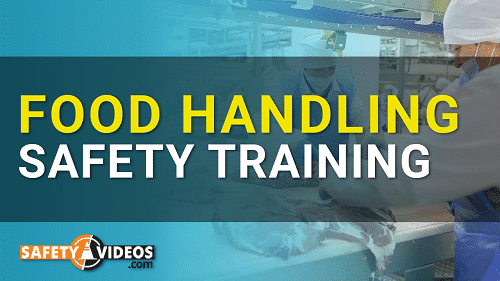


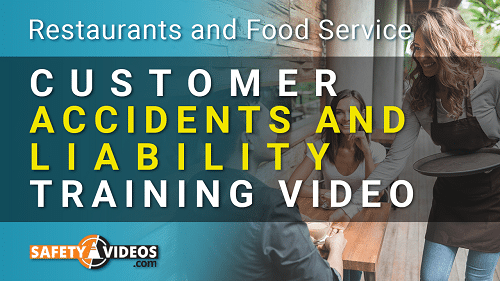
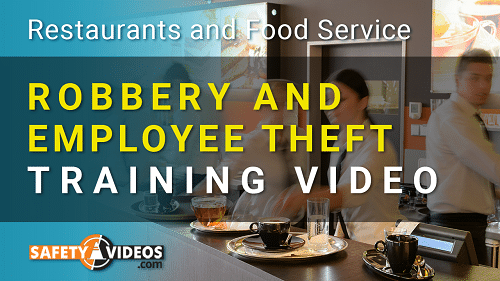
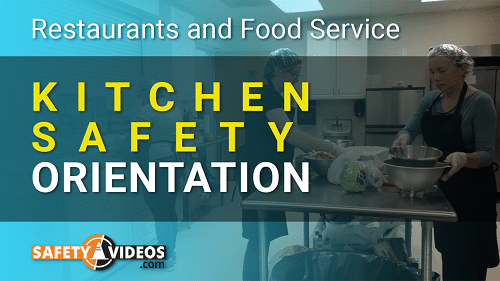
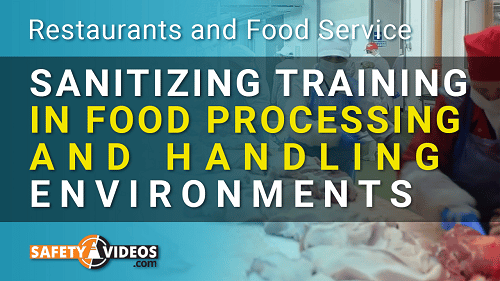
The flash drive was labeled as Food Handler, but the course on the drive was a different course. It was resolved very quickly and effortlessly for us.
Good product. Our team liked the video and the extra written materials. A+ from us!
Thumbs up!
Very good for the money paid. Excellent value for what you get!